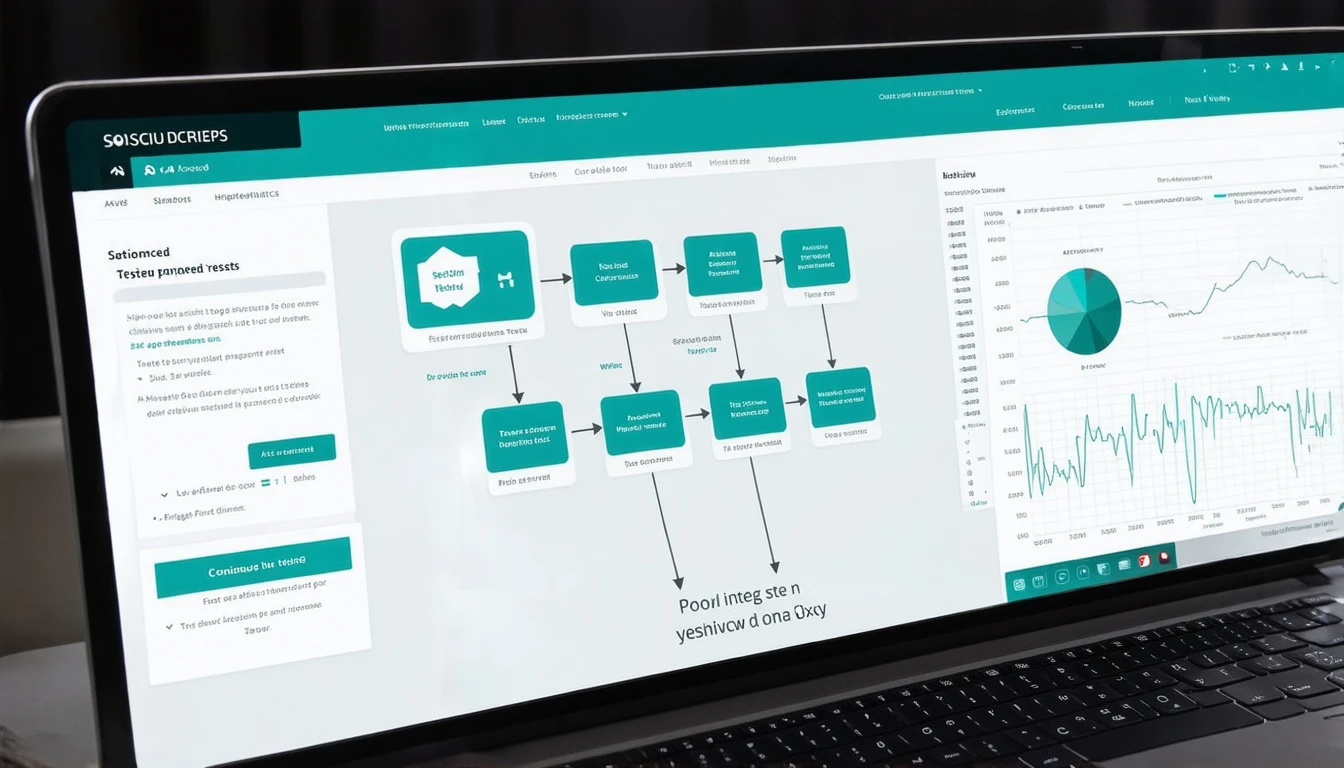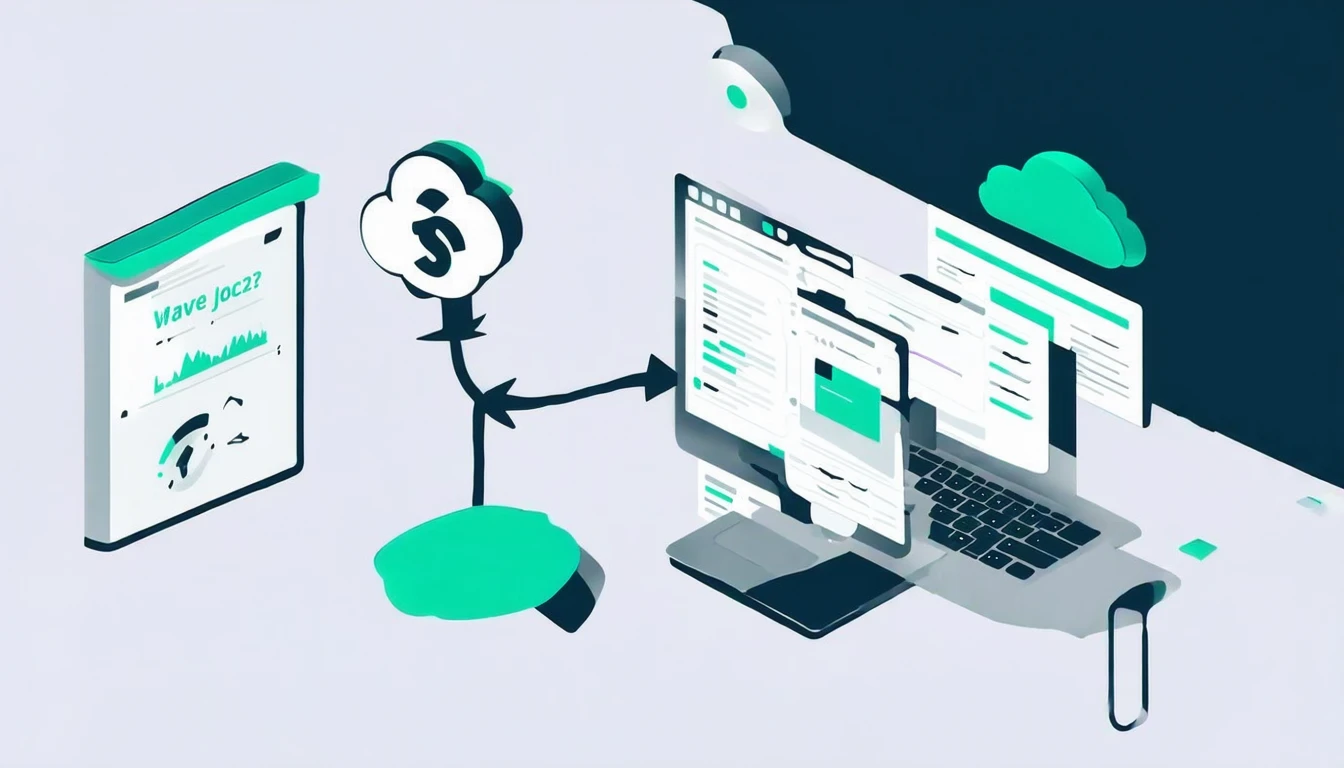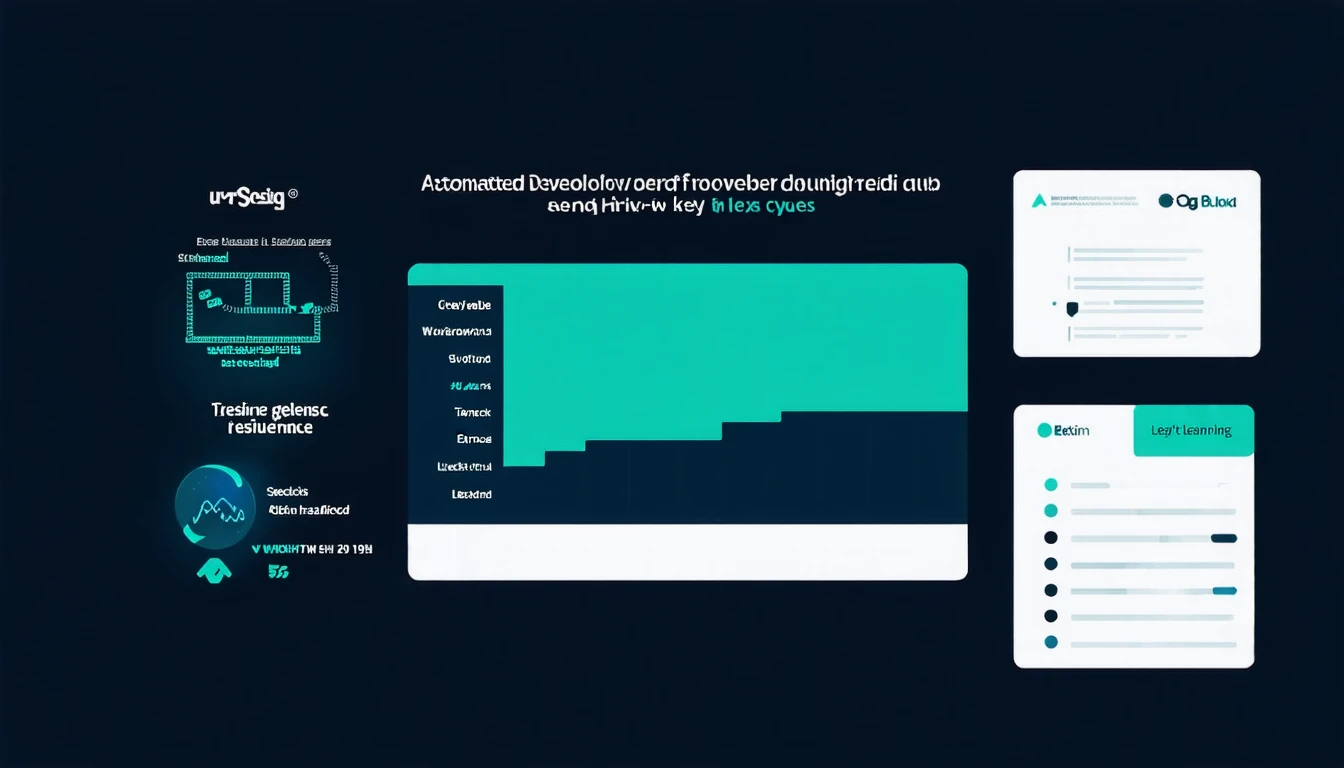In the ever-evolving realm of software development, the pressure to deliver high-quality applications swiftly is a relentless force. The stakes are high, with users demanding seamless experiences and businesses striving to stay ahead of competitors. Herein lies the critical role of software testing a key process that ensures the reliability, functionality, and performance of applications. Yet, traditional testing methods often falter in keeping pace with the rapid development cycles and burgeoning complexity of modern software. This article delves into why testing is indispensable in software development and how innovative solutions like AI-driven platforms are reshaping the landscape.
Testing might seem like a tedious phase in the software development lifecycle, often perceived as a bottleneck. However, its significance cannot be overstated. Effective testing not only uncovers defects but also enhances software quality, boosts user satisfaction, and ensures compliance with industry standards. Without rigorous testing, even the most innovative applications risk becoming obsolete due to unresolved bugs or security vulnerabilities.
In this comprehensive exploration, we will unpack the multifaceted nature of software testing. We’ll examine different testing methodologies, the challenges faced by testers, and how cutting-edge tools are transforming the industry. Moreover, we’ll highlight the importance of integrating AI-driven solutions such as GenQE to optimize testing efforts and elevate software quality to new heights.
The Essential Role of Software Testing

Software testing acts as the guardian of quality, ensuring that applications function as intended. It involves evaluating software through various methods to identify and rectify defects before deployment. But what exactly makes testing so crucial?
Understanding the Testing Landscape
The landscape of software testing is diverse, encompassing various types and methodologies. From unit testing, which focuses on individual components, to system testing that examines the entire application, each type serves a distinct purpose. Functional testing verifies that software performs its specified functions, while non-functional testing assesses attributes like performance and usability.
Consider a real-world example: a financial application used by millions must undergo rigorous functional testing to ensure transactions are processed accurately. On the other hand, non-functional tests are crucial for assessing how the application performs under heavy loads, ensuring it can handle peak transaction volumes without faltering.
“Good software testing identifies defects, but great testing ensures they never reach the end user.”
The choice of testing methodology is dictated by the project requirements, timelines, and available resources. Agile and DevOps paradigms have further influenced testing approaches, emphasizing continuous integration and automated testing to align with rapid development cycles. In an Agile setup, testing is not a separate phase but an ongoing activity integrated throughout the development process, allowing teams to identify and fix issues early.
Challenges in Traditional Testing
Despite its importance, traditional testing is fraught with challenges. Manual testing can be labor-intensive and prone to human error, often leading to incomplete test coverage. The increasing complexity of applications and shorter release cycles add to the pressure, making it difficult for testers to keep up. A survey by Capgemini revealed that 57% of organizations cite the scale and complexity of applications as their top challenge in testing.
GenQE offers a solution to these challenges by enhancing test automation and reducing manual effort. Through AI-driven test generation and smart test execution, GenQE optimizes testing processes, allowing teams to focus on high-impact areas without being bogged down by repetitive tasks. For instance, GenQE can automatically generate test cases based on user behavior analytics, ensuring that the most critical user journeys are thoroughly tested.
Navigating the Complexities of Modern Software Testing

As software systems grow in complexity, testing methodologies must evolve to address new challenges. This section explores how modern testing strategies are adapting to the intricate nature of contemporary software development.
The Shift Towards Automated Testing
Automation has become a cornerstone of modern software testing. By automating repetitive and time-consuming tasks, teams can achieve faster and more accurate results. Automated testing tools execute pre-scripted tests on the application to validate its functionality and ensure that new changes do not introduce defects.
For example, an e-commerce platform releasing weekly updates can leverage automation to ensure that new features or bug fixes do not impact the checkout process, which is critical for business continuity.
“Automation in testing is not just about speed; it’s about precision and freeing up human testers for more strategic tasks.”
GenQE exemplifies this shift with its AI-driven capabilities, which automate test case generation and execution. Its self-healing automation feature is particularly noteworthy, as it automatically adjusts test scripts to accommodate changes in the user interface, reducing maintenance efforts significantly. This is vital for applications with frequently evolving interfaces, such as online banking apps, where UI changes are common.
Embracing Continuous Testing
Continuous testing is an integral part of the DevOps pipeline, enabling teams to test early and often. This approach ensures feedback is provided at every stage of the development process, allowing for quicker identification and resolution of issues. A key benefit of this approach is the reduction in the feedback loop, which helps prevent the accumulation of technical debt.
Incorporating tools like GenQE into the continuous testing framework enhances efficiency. GenQE seamlessly integrates with CI/CD tools, ensuring that testing is an uninterrupted part of the development process. This integration not only accelerates release cycles but also maintains high software quality. For instance, a SaaS provider can use GenQE to automatically run regression tests every time a new code is checked in, ensuring that existing functionality remains intact.
The Impact of AI on Software Testing

Artificial Intelligence (AI) is revolutionizing the software testing landscape, offering unprecedented opportunities to enhance efficiency and accuracy. This section delves into how AI is transforming testing practices and the benefits it brings.
AI-Driven Test Generation and Execution
AI’s ability to process vast amounts of data and recognize patterns makes it an invaluable asset in test generation and execution. AI-driven tools can analyze software requirements, user behavior, and historical data to create comprehensive test cases that cover a wide array of scenarios.
Consider a healthcare application that needs to comply with strict regulatory requirements. AI can analyze historical data to identify critical areas that need testing, ensuring compliance without the exhaustive manual effort typically required.
GenQE leads the charge in AI-powered testing solutions. By leveraging machine learning algorithms, GenQE not only generates and executes test cases but also prioritizes them based on risk analysis. This ensures that critical areas are tested first, optimizing testing efforts and focusing on high-impact defects.
“AI in testing is not about replacing human testers; it’s about enhancing their capabilities and ensuring higher quality outcomes.”
Advanced Defect Detection and Analysis
Detecting defects early in the development cycle is crucial to preventing costly fixes later on. AI-powered tools can analyze test results to identify anomalies and potential defects, often before they manifest in production. This proactive defect detection can save companies significant resources, as the cost of fixing a bug increases exponentially the later it is discovered in the development process.
GenQE’s AI-powered defect detection feature exemplifies this capability. By identifying patterns in test results, it provides early warnings of potential issues, allowing teams to address them proactively. This proactive approach not only improves software quality but also reduces time to market. For example, an enterprise application can leverage GenQE to identify and resolve critical issues during beta testing, thus preventing them from affecting end users.
Overcoming the Challenges of Cross-Platform Testing

Developers today face the daunting task of ensuring their applications function seamlessly across a myriad of platforms and devices. This section explores the intricacies of cross-platform testing and how it can be effectively managed.
The Need for Comprehensive Test Coverage
With the proliferation of devices and operating systems, achieving comprehensive test coverage is more challenging than ever. Applications must be tested on various platforms to ensure consistent performance and user experience. Consider a popular social media app that must deliver a consistent user experience on both iOS and Android, across various device sizes and operating systems.
“In a world of diverse platforms, comprehensive test coverage is the bridge between good and exceptional software.”
GenQE provides extensive test coverage across web, mobile, APIs, and cloud environments. Its ability to test applications on different platforms ensures that they function seamlessly, regardless of the device or operating system. This comprehensive approach is crucial for consumer-facing applications that must perform flawlessly to maintain user loyalty.
Strategies for Effective Cross-Platform Testing
To tackle the complexities of cross-platform testing, teams must adopt a strategic approach. This includes prioritizing platforms based on user demographics, leveraging cloud-based testing environments, and employing test automation to cover a wide range of scenarios. For instance, a travel booking platform might prioritize testing on mobile devices, as the majority of its users access the service via their phones.
GenQE’s seamless integration with various testing tools and platforms makes it an ideal choice for cross-platform testing. Its advanced analytics and reporting capabilities provide detailed insights into software quality trends, enabling teams to make informed decisions and optimize their testing strategies. By employing GenQE, a development team can efficiently manage the testing of complex applications across multiple environments without sacrificing quality.
Enhancing Developer Productivity Through Efficient Testing

Efficient testing not only improves software quality but also boosts developer productivity. This section examines how streamlined testing processes can free developers to focus on innovation and creativity.
Reducing the Burden of Manual Testing
Manual testing is often time-consuming, diverting developers’ attention from core development tasks. By automating routine testing processes, teams can significantly reduce the manual effort required, allowing developers to concentrate on building new features and enhancing the application. This shift is particularly beneficial for startups and small teams, where resources are limited and maximizing productivity is essential.
GenQE plays a pivotal role in this transformation by automating tedious testing tasks. Its AI-driven capabilities minimize human errors and accelerate release cycles, enabling developers to operate more efficiently and deliver high-quality software faster. For example, a fintech startup can use GenQE to automate regression testing, ensuring that critical financial functions are not disrupted by new updates.
“Efficiency in testing translates to more time for creativity and innovation in development.”
The Role of Analytics in Testing
Advanced analytics and reporting are essential components of efficient testing. They provide valuable insights into testing performance, defect trends, and software quality, helping teams identify areas for improvement. By leveraging analytics, teams can pinpoint bottlenecks in the testing process and address them proactively, ensuring smoother software releases.
GenQE’s advanced analytics feature offers detailed dashboards and AI-driven recommendations that guide teams in making data-driven decisions. By understanding software quality trends, developers can prioritize their efforts and enhance the overall development process. This data-driven approach empowers developers to focus on innovation, knowing that the quality of their software is being maintained at a high standard.
Conclusion: Embracing the Future of Software Testing

As we navigate the complexities of modern software development, the importance of robust testing practices becomes increasingly evident. Testing is not just a step in the development process; it is the key to unlocking superior software quality, user satisfaction, and business success. By embracing innovative solutions like AI-driven testing platforms, development teams can overcome traditional challenges and achieve new levels of efficiency and accuracy.
GenQE represents the future of software testing, offering a scalable, intelligent solution that addresses the dynamic needs of the industry. By integrating GenQE into your testing strategy, you can enhance quality, reduce costs, and accelerate your development cycles. This aligns with the broader industry trend towards AI and automation, helping organizations remain competitive in a fast-paced digital landscape.
“The future of software testing lies in harnessing the power of AI to create faster, smarter, and more reliable solutions.”
As you explore the tools and strategies discussed in this article, consider how they can elevate your testing processes and drive your software development endeavors forward. The journey to superior software quality begins with embracing the transformative power of advanced testing solutions. Taking the first step towards integrating AI-driven testing solutions like GenQE can set your organization on a path to sustainable growth and innovation.
Discover More Innovative Solutions
Want to learn more about the tools and technologies discussed in this article? Explore how these innovations can be tailored to your specific needs and workflow requirements.
Our team of experts is available to answer your questions and provide personalized insights into how modern solutions like GenQE can address your specific challenges.
If the link above does not work, please visit: https://calendly.com/dm-csimplifyit/30min?month=2025-05